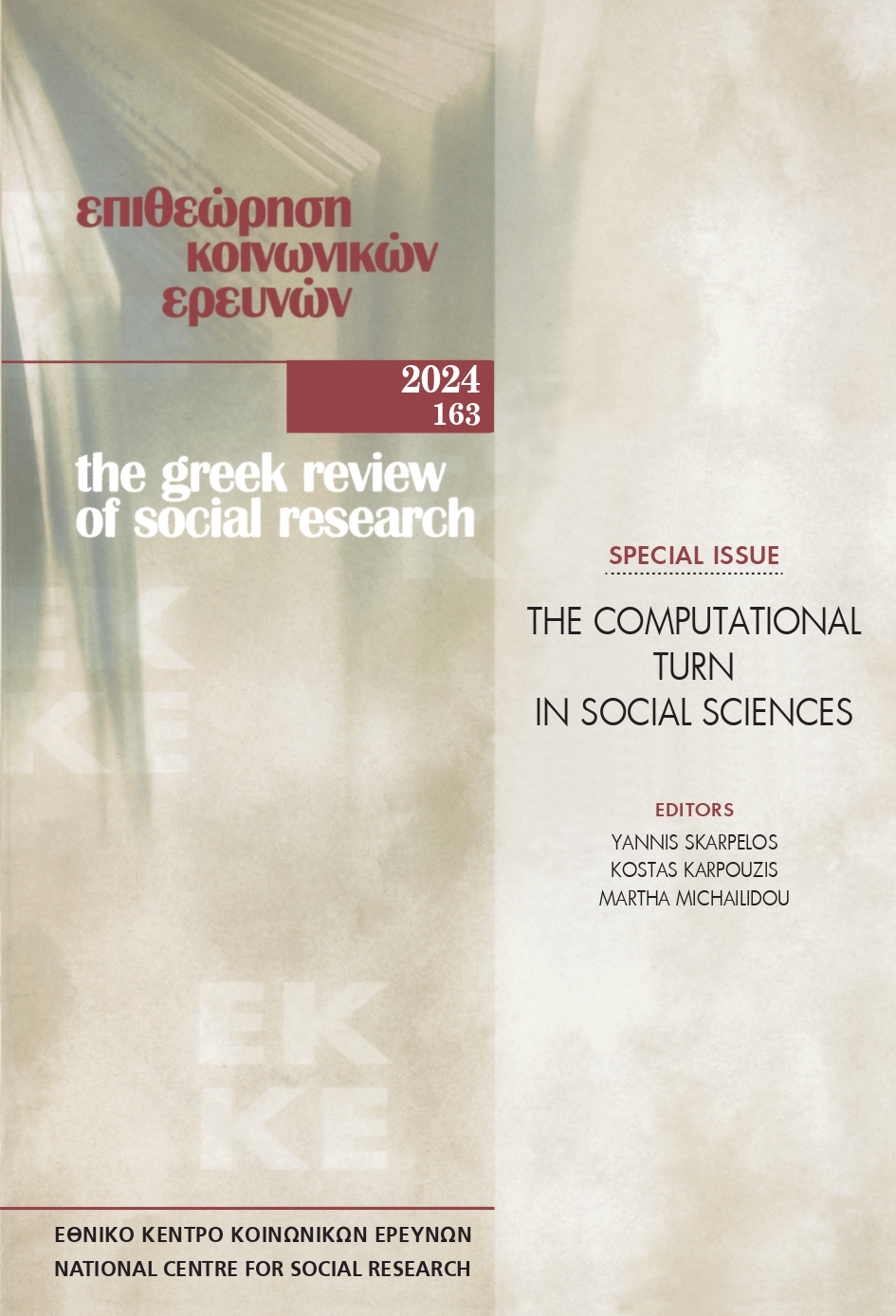An algorithm measuring the charisma of Greek journalists

Abstract
X, formerly, Twitter is considered a valuable tool for journalists for real-time interaction with their followers. Especially, in the case of political journalists, the degree of their influence and persuasion is of great importance. In this paper, we deal with identifying the journalists’ political charisma. More specifically we propose an algorithm based on the Analytic Hierarchy Process method to measure the political charisma of the journalists. Numerical results in two different use-case scenarios showed that the proposed algorithm could successfully determine charisma in that it tweaks influence towards a more specific political direction.
Article Details
- How to Cite
-
Kaimaki , V., Ampeliotis, D., Sgora , A., Konidaris , A., & Polykalas, S. (2024). An algorithm measuring the charisma of Greek journalists. The Greek Review of Social Research, 163, 93–123. https://doi.org/10.12681/grsr.38504
- Section
- Articles

This work is licensed under a Creative Commons Attribution-NonCommercial 4.0 International License.
Authors who publish with this journal agree to the following terms:
- Authors retain copyright and grant the journal right of first publication with the work simultaneously licensed under a Creative Commons Attribution Non-Commercial License that allows others to share the work with an acknowledgement of the work's authorship and initial publication in this journal.
- Authors are able to enter into separate, additional contractual arrangements for the non-exclusive distribution of the journal's published version of the work (e.g. post it to an institutional repository or publish it in a book), with an acknowledgement of its initial publication in this journal.
- Authors are permitted and encouraged to post their work online (preferably in institutional repositories or on their website) prior to and during the submission process, as it can lead to productive exchanges, as well as earlier and greater citation of published work (See The Effect of Open Access).


